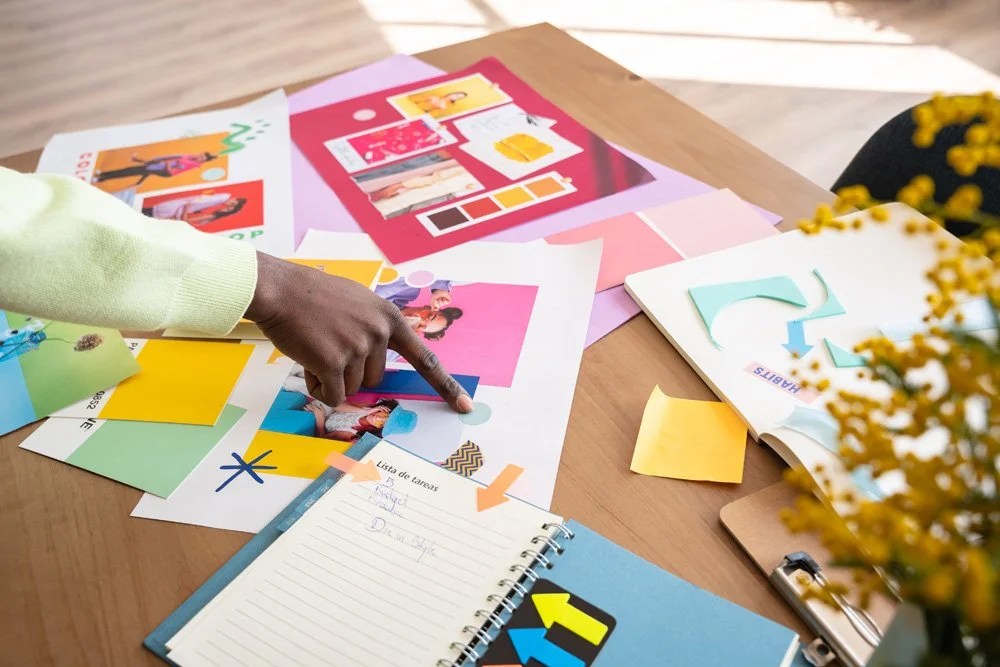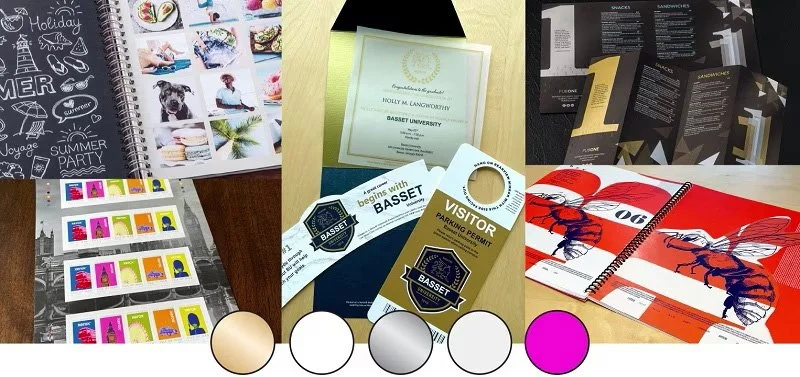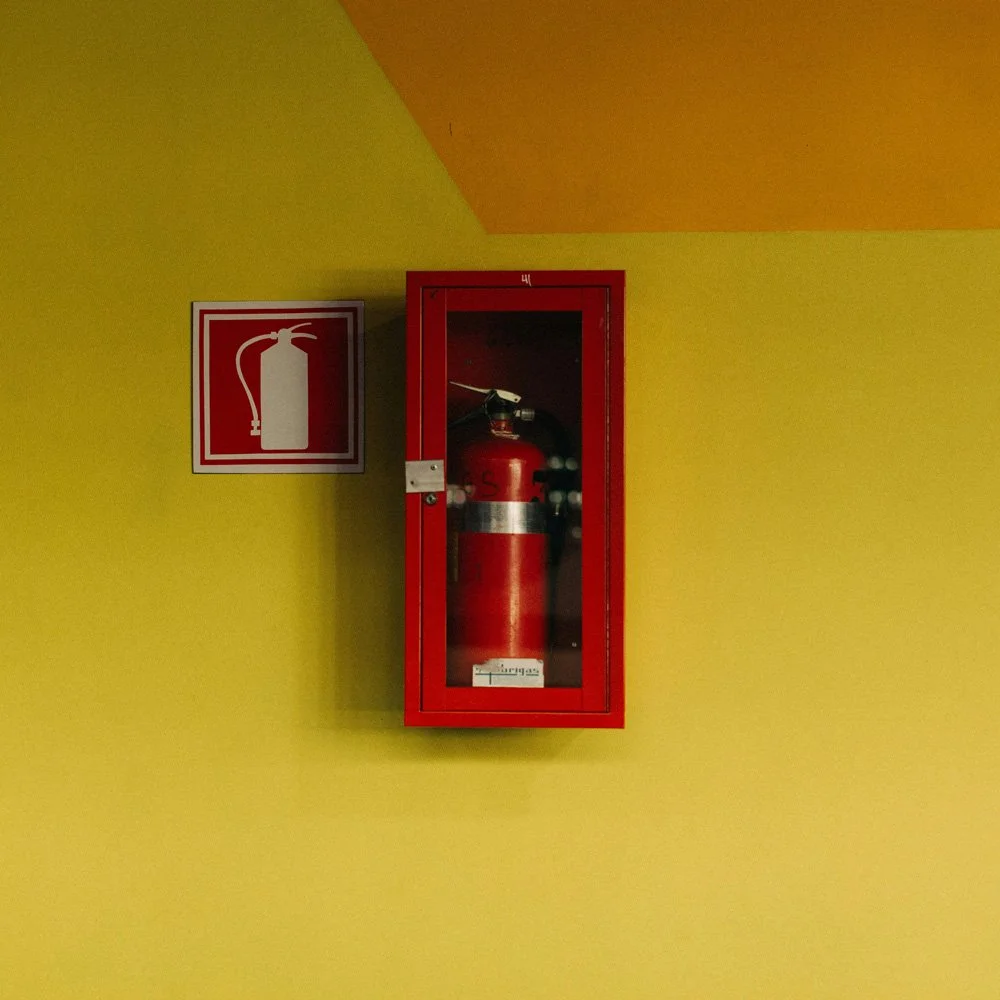The blurred lines of litho and digital printing
Litho printing vs. digital printing
Up until around five years ago, deciding which printing technology to use for a print job was almost as black and white (if you’ll pardon the pun) as litho for long print runs and digital for short print runs. However, printing technology has evolved massively over recent years and today the lines between what can be achieved with digital printing and traditional offset lithographic printing (litho) have blurred.
We embrace both printing technologies and celebrate and combine their strengths. We’ve invested in some of the most advanced machines and equipment to ensure that we deliver the highest quality print, whether it’s digital, litho or a combination of the two.
Let’s take a look at the two technologies and the factors that might affect whether your next print job is more suitable for litho or for digital – or a combination of both.
The old days of litho vs. digital
First let’s take a quick look at why litho was traditionally used for longer print runs. Although the actual cost to print a sheet was lower than if printed digitally, the majority of time involved and costs incurred were at the set-up stage, when the printing plates were being created. That meant the unit cost decreased as the volume increased.
Digital printing is a modern method of printing that uses a digital based image to print directly onto the printing surface using a laser or inkjet printing press. Until more recently, digital printing set-up and turn around times were a lot quicker than lithographic printing, but quality wasn’t as sharp or consistent.
Both technologies have moved on at a pace. There are still certain advantages and disadvantages to each, but as mentioned earlier, the lines have blurred.
Introducing the Heidelberg Speedmaster XL75 and the iGen 150
At BSG we’ve invested in a state-of-the-art, five colour Heidelberg Speedmaster XL75. It ensures that we can guarantee the highest standards of lithographic printing. This ultra modern press includes innovations such as the Prinect Inpress Control, which means the press continually measures colour, ink consistency and print quality to deliver optimum colour matching and quality control.
It also offers a fully automated set-up process, which significantly reduces the set-up time. With faster ready times, higher running speeds and production stability we can now offer litho as a viable and economic option for short print runs, as well as long.
At the same time, recent advancements in digital print technology means the print quality on digital printing has improved significantly.
Xerox® iGen®
We’ve invested in Xerox® iGen® technology which has dramatically increased our capacity for digital print as well as our capabilities and flexibility. The Xerox® iGen® is able to print a greater range of sizes, such as large brochures etc, and the sophisticated colour management tools allow for precise control of output. This means that the results can rival traditional offset printing in terms of quality and accuracy.
Our digital press can turn out an impressive 150 pages per minute. This means that we can cost effectively cater for high volume print runs as well as short runs with tight timescales.
Which printing technology to use?
When deciding whether to go the litho or digital route, there are a number of factors that will affect the decision. Cost does still play its part. For very short runs digital is still more cost effective as it’s quicker to set-up. The type of surface you want to print on will also influence the decision. Digital printing isn’t as suitable for more fibrous and raw printing stock or for heavily coated surfaces.
Litho printing also has an advantage over digital printing when it comes to folding. With digital printing the toner sits on top of the sheet and so if there are lots folds required, there is a risk of cracking.
Most digital presses use a four-colour (CMYK) printing process, so if you need specialist pantone spot colours (for example, for your corporate logo), metallic colours or UV varnishing, then litho is typically your best option. Litho is also great for printing large areas of solid single colour.
Where digital has the advantage over traditional litho, is the use of variable data. With digital printing you can personalise individual sheets with different images and information, very simply. This variable data capability has revolutionised marketing with the capability to make each product unique.
Of course, it’s perfectly possible to combine litho and digital to achieve the cost and quality benefits of litho for a long print run, with digital technology then overlaying with variable data. This is a process we adopt regularly. We use litho to lay down the main colours, and then over print personalised details using digital. The results can be truly unique and quite spectacular!
Epson Proofer
Easy proof
Many people assume that if they require a physical proof before the full job is printed, then they will have to go the digital route. This certainly used to be the case as running off a couple of copies on a litho machine would be incredibly expensive. At BSG we’ve overcome this problem by investing in an Epson proofer which allows us to verify every proof to ensure colour accuracy.
And the verdict is…
So, as you can see, there is no right or wrong answer. When it comes to choosing the best printing approach, there is much more of a crossover where digital print ends and litho printing starts. We love both technologies and will continue to invest in them in order to offer our customers the most flexible and highest quality printing service available.
To talk to us about printing services, best practice and to see our work, or even visit our print facility, please get in touch.














